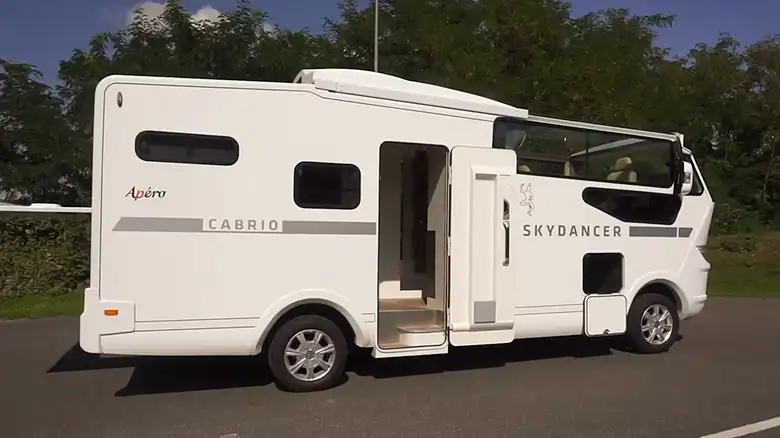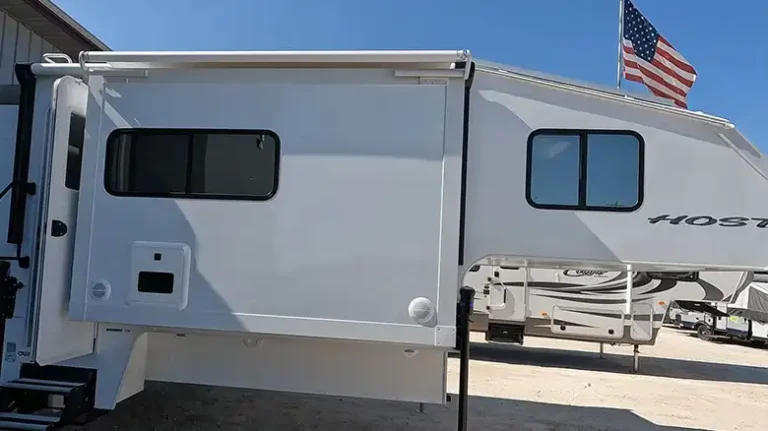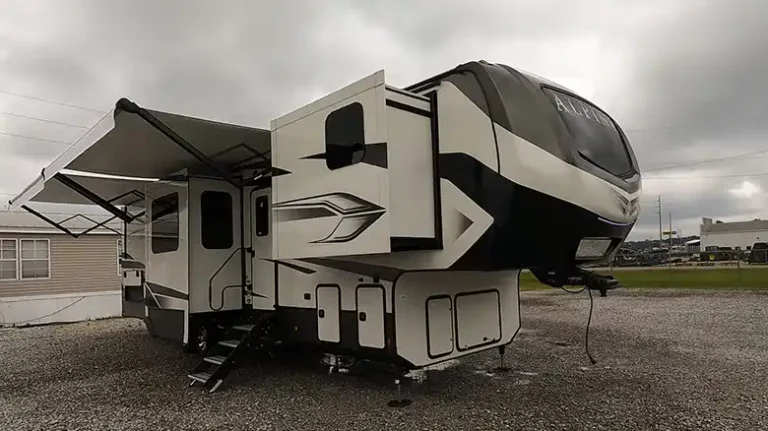How Many People Can Fit in an RV
Hitting the open road in an RV is a liberating way to travel. From coast to coast, RVing opens up this beautiful country of ours like no other mode of transportation can. As a seasoned RV enthusiast, I’m often asked – just how many people can comfortably fit and travel in one of these homes on wheels?
It’s a deceivingly complex question with many factors at play. While RVs may physically fit more bodies than recommended, realistically determining optimal occupancy requires carefully balancing space, comfort, and safety for all aboard. Basically, the RV occupancy ranges from 2 to 10 people mainly depending on several factors, including RV type, seating capacity, legal restrictions, and safety considerations.
In this comprehensive RV occupancy guide, I’ll share my tips and tricks for maximizing every square inch without compromising the journey. With insights covering everything from sleeping logistics to legal realities, let’s hitch up and hit the highway together as we discover the unique considerations for determining occupancy limits in RVs of all shapes and sizes.

RV Occupancy Depending on Various RV Types
RV occupancy varies widely depending on the type and size of the RV. Smaller campervans and Class B RVs generally only have sleeping space for 2-4 people. Class C RVs can accommodate 4-6 people depending on layout. For larger groups, Class A RVs and fifth wheels work best, fitting 6-8 people comfortably. Larger Class A diesel motorhomes can sometimes sleep up to 10. Toy hauler RVs sacrifice some living space for garage storage, limiting occupancy to 4-6 normally. Understand your RV’s layout, bed sizes, and seat belts to determine realistic occupancy.

Source: dailymail
RV Occupancy Depending on Sleeping and Seating Capacities
Two key factors that determine how many people can fit in an RV are sleeping capacity and seating capacity. Sleeping capacity refers to designated beds and convertible bed spaces like dinette sleepers. Make sure to consider each bed’s dimensions – a cozy double bed or small bunk beds aren’t ideal for larger adults. Check that bed configurations don’t overlap or block access. Seating capacity refers to built-in seats with seat belts for travel. Both stats should be considered, but seating capacity is often the limiting factor for travel occupancy. Sleeping 10 kids might seem fine, but not if there are only 6 seat belts. Go with the lower number for safe occupancy.
What Factors Affect RV Occupancy?
Aside from RV type and capacity stats, other factors impact comfortable occupancy –
Length of trip – More space needed for longer trips
Types of travelers – More space for adults vs. kids
Onboard amenities – Bathrooms, showers, seating
Outdoor space – Decks, and awnings expand usable space
Personal space – Some require more privacy than others
Evaluate how these amenities and individual needs balance with occupancy options. A short weekend trip can squeeze in more people than a multi-week excursion.
Maximum Occupancy: RV Passenger Laws
Most RVs have a maximum occupancy label, indicating the number of people it can legally accommodate based on seat belts. Exceeding this number is illegal and unsafe. But just because an RV legally fits 10 doesn’t mean 10 is ideal. As a general rule, stick to 2 people per seat belt for comfortable space. Consider 4 people per bed if beds exceed seat belts. Evaluate RV layout and dimensions to gauge livability and privacy too. Just because people are physically fit doesn’t mean the experience will be enjoyable in the long term. Keep practical factors in mind when determining occupancy.
Are there any special cases regarding RV passenger regulations? In certain states, RVs of a particular age may be exempted from certain seat belt laws. It’s crucial to review the regulations of the states through which you’ll be traveling in your RV to identify any potential exemptions. Stay informed to ensure compliance with specific rules and exceptions applicable to your journey.
Recommended Occupancy: A Balance of Comfort and Safety
Recommended occupancy considers both legal restrictions and practical livability. Here are some general occupancy guidelines to ensure an enjoyable RV experience –
Campervans: 2-3 people
Class B Vans: 2-4 people
Class C Motorhomes: 4-6 people
Class A Motorhomes: 6-8 people
Fifth Wheels: 4-8 people
Toy Haulers: 4-6 people
These ranges account for different RV sizes within each class. Focus on factors like bed configurations, indoor living space, and number of seat belts to home in on ideal occupancy. Leave some buffer room too – tight quarters can quickly feel cramped.
Quick Tips
a) Allow at least one bed per person
b) Have seats and seat belts for all during travel
c) Ensure the bathroom has ample privacy
d) Provide storage space for everyone’s gear
e) Leave room to move around comfortably
NOTE: For long trips, err on the side of extra space. Don’t sacrifice safety or sanity just to maximize occupancy.
How to Maximize RV Occupancy Effectively?
If you need to fit more people than typical occupancy –
Step 1: Prioritize seating capacity and oversleeping capacity. It’s illegal to exceed seat belts.
Step 2: Get creative with bedding. Use portable cots, bedding layers, or outdoor tents and hammocks.
Step 3: Optimize storage to maximize living space. Remove non-essentials and organize ruthlessly.
Step 4: Adjust schedules for privacy needs. Take turns using the bathroom and common areas.
Step 5: Spend more time outdoors enjoying nature and campsites.
Step 6: Upgrade amenities like extra bathrooms and multiple slide-outs if possible.
With smart strategies, you can safely and legally fit 1-2 extra people when needed without compromising comfort.
Safety Considerations While Overloading RV Occupancy
While RVs can technically fit more people than recommended, safety should be the top priority. Excess occupancy raises risks of –
a) Exceeding weight ratings and payload capacity
b) Difficulty evacuating in an emergency
c) Increased fire hazards
d) Insufficient seat belts for travel
e) Greater strain on electrical, plumbing, and ventilation systems
f) Higher risk of accidents if the driver is distracted
Therefore, if you push it at maximum occupancy, you need to –
Step 1: Distribute weight evenly to avoid tire or axle damage
Step 2: Drive slowly and avoid rough terrain
Step 3: Have an experienced driver tow or drive
Step 4: Consider an auxiliary brake system
Step 5: Take short trips and frequent breaks
Step 6: Watch tires and temperatures for signs of strain
Step 7: Make an evacuation plan, identifying exits
So, carefully check the RV’s weight ratings before traveling and work to distribute weight evenly. Also, confirm escape routes are clear, review fire protocols, and require seat belt use. Perform extra safety checks and drive more cautiously if at max occupancy. Don’t overload the RV just to fit more people than is safe or legal.
RV Accessories: Enhancing Occupancy Options
Certain RV accessories can expand occupancy options without compromising safety –
Roof-mounted tents: Add sleeping spaces upwards
Outdoor mats: Extra bedding easily stored outside
Portable cots: Versatile extra beds as needed
Outdoor cooking gear: Free up interior space
Extended awnings: The extended adds outdoor living area
Portable outdoor showers: Supplement fixed showers
Additional seat belts: Securely allow more passengers.
Bed extenders: Offer extra mattress space.
Bunk beds: Work for families with kids.
Storage solutions: Cargo carriers and racks provide room for more stuff.
Research gear to suit your RV model and balance added capacity with convenience and budget. With smart additions, RVs can comfortably accommodate 1-2 extra people.
Frequently Asked Questions
How many adults can legally ride in a Class C RV?
Most Class C RVs have seat belts for 4 to 6 passengers, which determines the legal adult occupancy. Make sure adults do not exceed the labeled seating capacity.
What is the maximum number of people allowed in a travel trailer?
Travel trailers range widely in size, but most accommodate 8 people or less. Look for the RV’s occupancy label and follow guidelines of 2 people per bed and seat belt. Fitting more can be illegal and unsafe.
Can you put more than one family in an RV?
One family per RV is recommended for space and legal reasons. Most RVs only have 1-2 beds/bathrooms intended for a single family. Exceeding weight ratings or seating capacity with multiple families could be illegal.
Does RV occupancy include pets?
Pets don’t factor into human occupancy limits, though they do take up space. Make sure to account for pets when planning.
What size RV will fit most people?
If you need maximum occupancy, larger Class A and Class C RVs around 30-40 feet work best. Look for models with multiple slide-outs, convertible beds, and seating/sleeping for 8-10. But always check the occupancy label and follow guidelines.
How do the laws vary from state to state?
States have slightly different occupancy rules, but most follow the federal standard of one seat belt per passenger. Some states restrict riding in trailers or pickup truck beds. Review state laws along your route to ensure compliance. Focus on manufacturer’s limits and seat belts.
Can I sleep or stay in the RV bathroom?
RV bathrooms are very small, so staying or sleeping inside for extended periods is unsafe and very uncomfortable. Use the bathroom for its intended purpose only. For extra sleeping space, look into temporary cots, outdoor tents, or other authorized extensions that meet codes. Don’t try to sleep in the bathroom.
Where can I find my RV’s exact occupancy limit?
Check the owner’s manual, look for a placard near the doorway, or contact the manufacturer directly.







